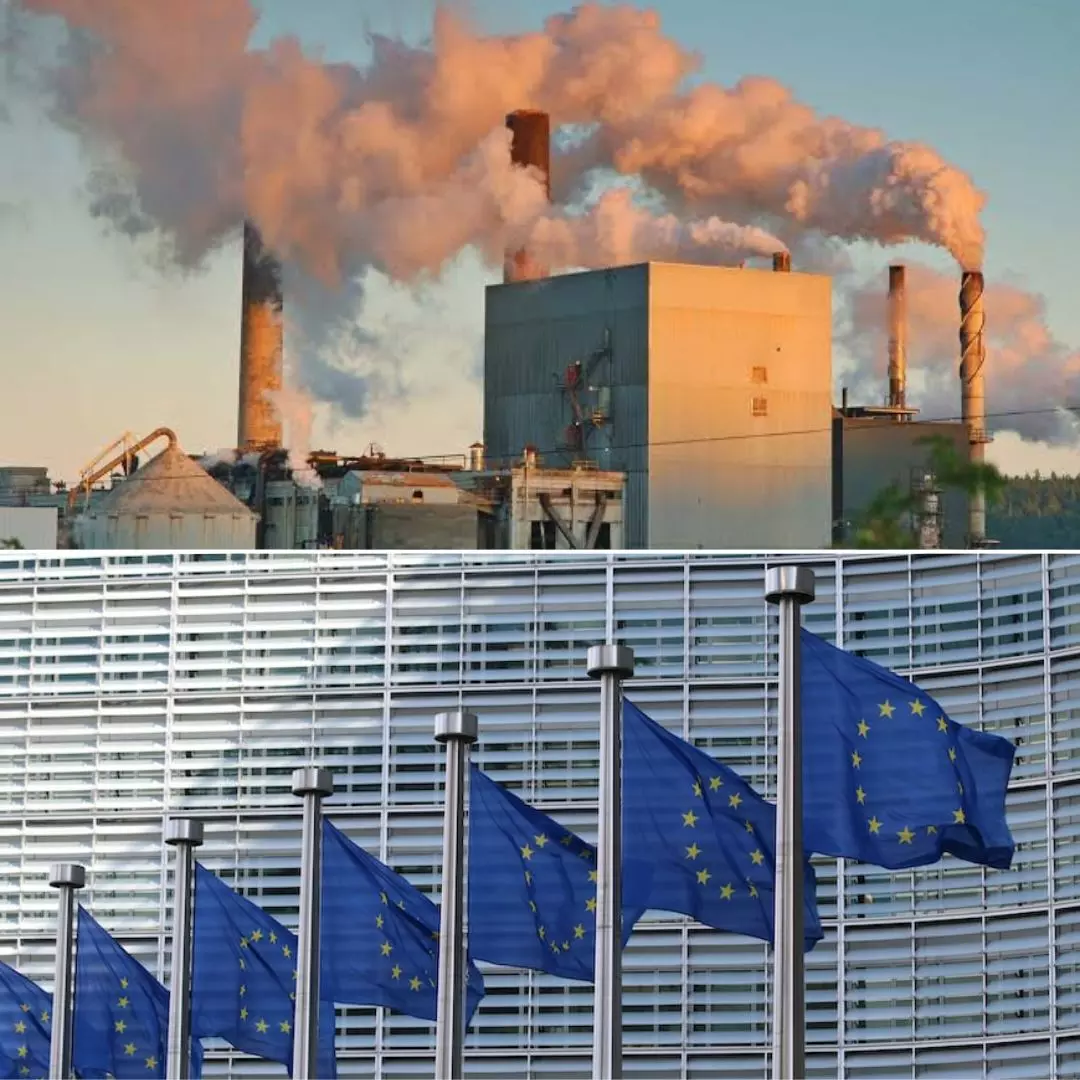
Image Credits: Unsplash and Britannica (Representational)
Landmark Reform! EU Agrees To World's First & Largest Carbon Border Tax; Here's All You Need To Know
Writer: Laxmi Mohan Kumar
She is an aspiring journalist in the process of learning and unlearning many things. Always up for discussions on everything from popular culture to politics.
Others/World, 20 Dec 2022 5:46 AM GMT
Editor : Shiva Chaudhary |
A post-graduate in Journalism and Mass Communication with relevant skills, specialising in content editing & writing. I believe in the precise dissemination of information based on facts to the public.
Creatives : Laxmi Mohan Kumar
She is an aspiring journalist in the process of learning and unlearning many things. Always up for discussions on everything from popular culture to politics.
Moving toward the goal of carbon neutrality, the EU member states will be reforming the carbon market with border taxes and free allowances. It will soon expand to households and charge them for emissions starting in 2027.
European Union (EU) member states and parliamentarians on December 18 announced a landmark reform within the bloc's carbon market. This agreement they have come to act as the central plank to its ambitions to reduce carbon emissions and invest in climate-friendly technologies. The deal looks into several provisions such as accelerated emission cuts, phase-out free allowances to industries, fuel emissions from the building and road transport sectors, and much more. However, the initiative that stood out was the carbon border tax, which marks itself as the world's first major move aimed at making the economy carbon-neutral by 2050.
The EU ministers finalised the details of the Carbon Border Adjustment Mechanism (CBAM) after reaching a provisional agreement earlier in the week. The controversial measure adds a pollution price on certain imports to the EU, which makes it necessary for carbon-intensive industries to comply with stricter emission standards. Even though considered a huge step towards tackling the harmful emission rates, many countries, like the United States, China, India, Brazil, South Africa and several others, including least-developed countries, have expressed concern over the EU's CBAM.
What Is The Carbon Border Tax?
A carbon border tax (CBT) is a duty placed on imports based on the amount of carbon emission that results from the production of the product in question. It places a conscious price on carbon as a measure to discourage emissions. However, from a trade-related perspective, many have argued that it would affect production and exports.
The idea of CBT has been discussed widely by experts for years, and they have explored the trade risks that could tag along with the taxes. Many claimed that it could become a protectionist device, unduly shielding local industries from foreign competition in so-called 'green protectionism'. There are also measures proposed to hold back incentives for companies under the bloc that would move production to more tolerant countries with weaker regulations, something that EU lawmakers refer to as "carbon leakage."
As per the agreement, companies would have to buy certificates that contain information on emissions generated during the production of goods imported into the EU. These calculations would be based on the EU's carbon prices, and the quantity of free emissions allowances will be phased out between 2026 and 2034. It would first be applied to industries of iron, steel, cement, aluminium, fertilisers, electricity production and hydrogen before being extended to other goods.
Peter Liese, the lead negotiator for the European parliament, conveyed through a statement that the deal would be a huge step toward fighting climate change at low costs. The European Parliament and Council are yet to formally approve the deal before it comes into force in 2026.
Part Of A Larger Plan To Tackle Climate Crisis
CBT is the tip of the iceberg for a wider deal that reforms the EU carbon market to cut its emissions by 62 per cent by 2030, up from the previous goal of 43 per cent. The EU Carbon Market already caps greenhouse gas emissions from over 11,000 power and manufacturing plants, internal EU flights, and some 500 airlines. For electricity producers and industries with high energy demands, the system offers the purchase of "free allowances" to cover the emissions under the "polluter pays" principle, which can subsequently be traded. These provisions were key to the EU's bid to become the world's first carbon-neutral continent, but it has slowly been finding support from other blocs.
One such example is the agreement with negotiators from member states and the parliament engaging in intense discussions for over 24 hours regarding the widening of the scope of the EU Carbon market. Switching to greener technologies and designing quotas to encourage industries to emit less is part of their larger mission of achieving net neutrality in carbon emissions, reported the New Indian Express,
The agreement will also gradually aim to make households pay for emissions linked to fuel and gas heating from 2027 onwards, but the price will be capped until 2030. However, the plan has raised wide concerns as many European households continue to grapple with soaring energy prices exacerbated by Russia's invasion of Ukraine. If the prices continue to spiral, the household agreement will be delayed further by a year to ease the burden.
 All section
All section














